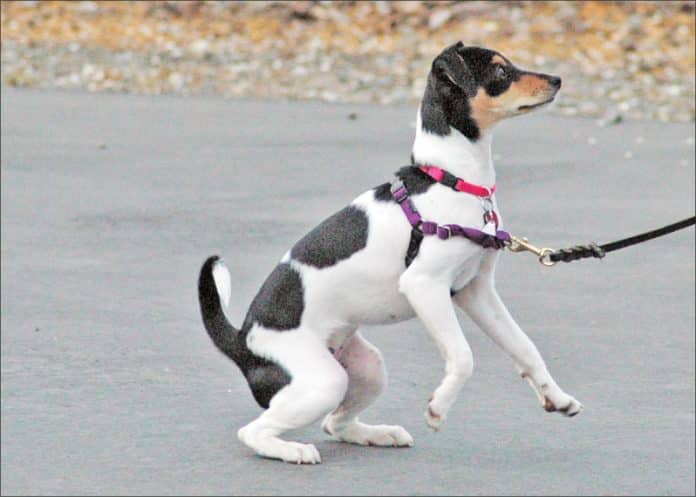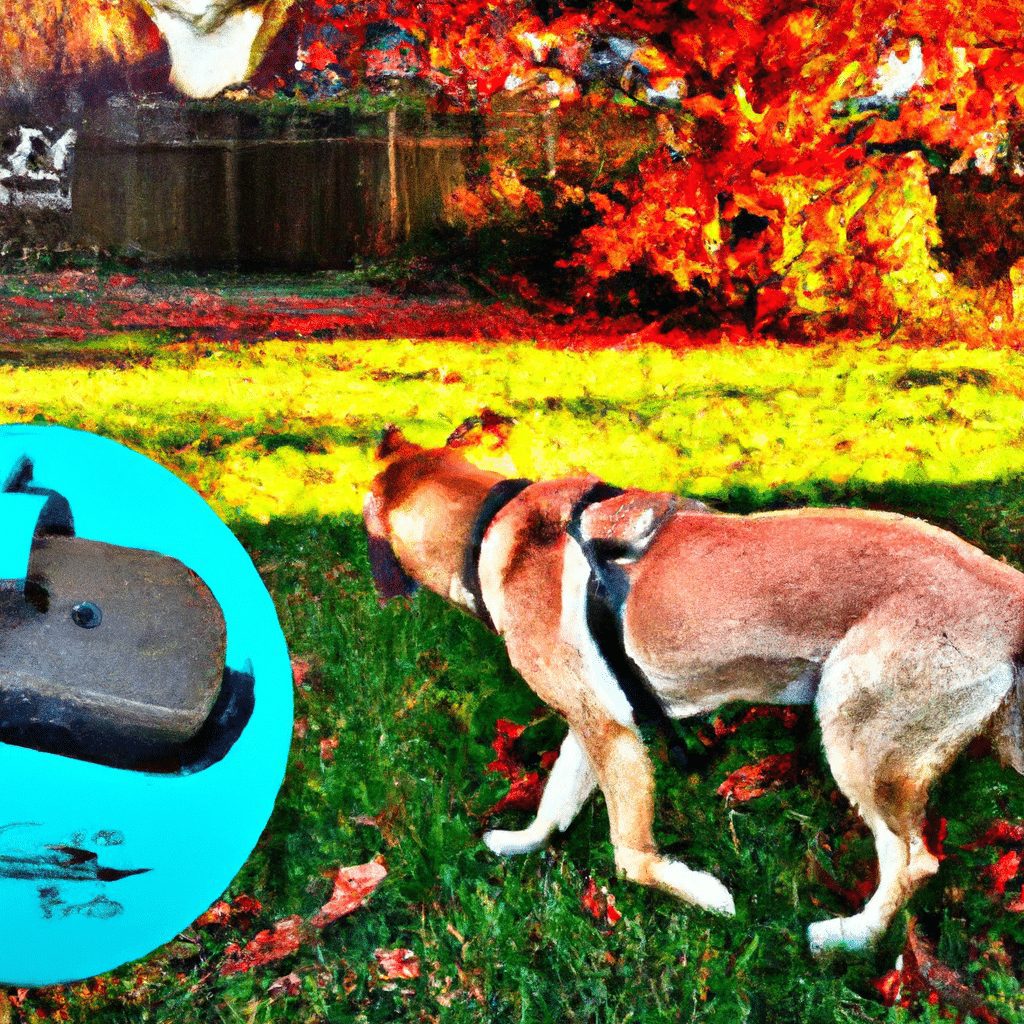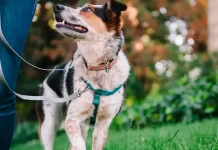Have you ever wondered why your beloved furry friend gets excited and wags their tail vigorously when you mention going for a walk, yet seemingly despises the moment you bring out their harness?
It’s a peculiar behavior that many dog owners find themselves puzzled by. This article will delve into the possible reasons behind this apparent contradiction, shedding light on why your dog might love walks but hate their harness.
By understanding their behavior, we can find ways to make the entire experience more enjoyable for both you and your four-legged companion.
Reasons why dogs love walks
Exercise and exploration
One of the main reasons dogs love going for walks is the opportunity for exercise and exploration. Dogs have an instinct to roam and explore their surroundings, and going for a walk allows them to fulfill this need. Whether it’s sniffing the grass, chasing after a squirrel, or simply stretching their legs, walks allow dogs to burn off energy and engage in physical activity.
Mental stimulation
In addition to the physical benefits, walks provide dogs with mental stimulation. The sights, sounds, and smells they encounter during their walks help keep their minds active and engaged. Dogs are sensory creatures, and the world outside their home provides a wealth of new and exciting stimuli. Exploring different environments and encountering various scents can be highly stimulating for dogs, keeping them entertained and mentally fulfilled.
Socialization opportunities
Dogs are social animals, and going for walks allows them to interact with other dogs and people, which helps with their socialization skills. Meeting and greeting other dogs while on a walk allows dogs to practice their social skills, learn appropriate dog-to-dog communication, and develop confidence in different social situations. Additionally, encounters with different people can help dogs become more comfortable and better behaved when meeting new individuals in other contexts.
Reasons why dogs may dislike harness
Lack of familiarity
Dogs may dislike wearing a harness because it is something new and unfamiliar to them. Dogs are creatures of habit, and changing their routine or introducing a new object can cause confusion or anxiety. It may take some time for a dog to become comfortable wearing a harness, especially if they have never worn one before.
Restrictive feeling
Another reason dogs may dislike harnesses is that they can feel restrictive compared to the freedom of not wearing one. Dogs are natural escape artists and enjoy having a wide range of movement. Having a harness securely fastened around their body can be uncomfortable for some dogs, as it limits their ability to move their shoulders, chest, and neck freely. This restriction can cause dogs to feel confined or restrained, leading to their discomfort or dislike of the harness.
Negative experiences
If a dog has had negative experiences while wearing a harness, such as discomfort or pain, they may develop a negative association with wearing one. Dogs have a remarkable memory for negative experiences, and even a single traumatic event can shape their behavior and preferences in the future. Therefore, if a dog has had a negative experience with a harness, they may resist or show aversion to wearing one in the future.
Uncomfortable fit
Lastly, dogs may dislike wearing a harness if it does not fit them correctly or causes discomfort. Ill-fitting harnesses can rub against a dog’s skin, causing chafing or irritation. If a harness is too tight, it can restrict the dog’s movements and potentially cause discomfort or pain. Dogs are sensitive creatures, and anything that causes discomfort can lead to a negative association and a dislike for wearing the harness.
Tips to help your dog enjoy harness
Introduce the harness gradually
To help your dog become more comfortable wearing a harness, it is important to introduce it gradually and positively. Start by allowing your dog to sniff and investigate the harness before attempting to put it on. Then, gradually begin putting the harness on your dog, rewarding them with treats and praise at each step. Take your time and allow your dog to set the pace, ensuring they feel safe and comfortable.
Use positive reinforcement
Positive reinforcement is a powerful tool for helping your dog associate the harness with positive experiences. When you successfully put the harness on your dog, reward them with treats, praise, and affection. This positive reinforcement will help create a positive association with the harness, making your dog more likely to enjoy wearing it. Consistency is vital, so reward your dog every time they wear the harness, especially in the beginning stages.
Ensure proper fit and adjustments.
An ill-fitting harness can be uncomfortable for a dog and may contribute to their dislike of wearing one. It is crucial to select the correct size harness and adequately adjust it to fit your dog’s body. Please ensure the harness is snug but not too tight and allows your dog to move their shoulders and chest comfortably. Regularly check and readjust the harness as your dog grows or if any signs of discomfort are observed.
Seek professional help
If your dog continues to show aversion or discomfort towards wearing a harness, it might be beneficial to seek the assistance of a professional. Dog trainers or behaviorists can provide guidance and personalized strategies to help desensitize and modify your dog’s behavior. They can assess the specific issues your dog is experiencing and tailor a training plan to address them effectively.
Understanding your dog’s body language
Signs of discomfort or anxiety
It is essential to be able to read your dog’s body language to understand their level of comfort or discomfort while wearing a harness. Signs of discomfort or anxiety can include excessive panting, sweating, pacing, trembling, yawning, or avoiding eye contact. If you notice any of these signs, addressing the issue and ensuring your dog’s well-being is essential.
Relaxed body language
On the other hand, when a dog is comfortable and relaxed while wearing a harness, they will display body language that indicates their contentment. Relaxed body language includes a loose stance, relaxed ears, a soft wagging tail, and a calm expression. If your dog exhibits these signs, it is a positive indication that they are comfortable and enjoying their harness.
Tail position and wagging
The position and movement of a dog’s tail can also provide insights into their feelings about wearing a harness. A tail held high and wagging gently is typically a sign of happiness and comfort. Conversely, a tucked tail or a tail held low and stiff can indicate anxiety or discomfort. Paying attention to your dog’s tail position and wagging can help you gauge their level of enjoyment or distress when wearing a harness.
Ears and vocalizations
The position and movement of a dog’s ears can also reveal their emotional state. When a dog’s ears are relaxed and in their natural position, it indicates comfort and contentment. However, if the ears are pinned back or flattened against the head, it may suggest anxiety or fear.
Additionally, vocalizations such as whimpering, whining, or excessively barking can indicate distress or unease. Observing your dog’s ears and monitoring their vocalizations can help you determine their comfort level while wearing a harness.
Different types of harnesses
Back-clip harness
A back-clip harness is a type of harness that has a D-ring located on the upper back of the dog. This design helps distribute the pressure evenly across the dog’s chest and back, making it a comfortable option for dogs with a tendency to pull. Back-clip harnesses are easy to put on and take off, making them a popular choice for dog owners.
Front-clip harness
As the name suggests, a front-clip harness has a D-ring on the front of the dog’s chest. This type of harness discourages pulling by redirecting the dog’s forward motion towards the owner. Front-clip harnesses are often recommended for dogs that pull excessively or have leash reactivity.
Head halter
A head halter is a harness that fits over a dog’s snout and behind their ears, similar to a horse’s halter. It works by gently guiding the dog’s head and redirecting their attention towards the owner. Head halters can effectively control and manage dogs with a strong tendency to pull or exhibit reactive behavior.
Vest harness
A vest harness is a type of harness that covers more of the dog’s body, providing additional support and stability. These harnesses often have padding and adjustable straps, making them comfortable and secure for dogs of all sizes. Vest harnesses are particularly beneficial for dogs with certain health conditions or mobility issues, as they provide extra support for their bodies.
Transitioning from collar to harness
Benefits of using a harness
Transitioning from a collar to a harness has several benefits for you and your dog. Harnesses distribute the pressure around your dog’s body more evenly, reducing the strain on their neck and throat. This is especially important for dogs with respiratory or tracheal issues. Additionally, a harness minimizes the risk of injury caused by pulling on the leash, as the force is spread across the dog’s chest and back.
Gradual transition process
When transitioning your dog from a collar to a harness, it’s essential to do so gradually. Start by getting your dog acquainted with the harness by allowing them to sniff and investigate it. Once they are comfortable with the harness, begin putting it on for short periods, gradually increasing the duration each time. Reward your dog with treats and praise during the transition process to reinforce their acceptance of the harness positively.
Teaching leash manners
Along with transitioning your dog to a harness, teaching them proper leash manners is crucial. Use positive reinforcement techniques to reward your dog for walking calmly by your side and not pulling on the leash. Consistency and patience are key when teaching leash manners, and it may take some time and practice for your dog to learn and adjust their behavior.
Addressing specific harness-related issues
Escape artist dogs
If your dog tends to be an escape artist and frequently slips out of their harness, it’s crucial to address the issue promptly. Consider using a harness with multiple points of attachment or a double-ended leash that can be attached to the harness’s front and back. This will provide additional security and make it more difficult for your dog to escape. Additionally, reinforcing basic obedience commands and using positive reinforcement training techniques can help prevent escape attempts and strengthen your dog’s response to your cues.
Chewing or scratching the harness
Some dogs may tend to chew or scratch at their harness, potentially causing damage to it. If your dog exhibits this behavior, consider using a harness made of more durable materials, such as reinforced nylon or leather. Additionally, providing appropriate chew toys or engaging in regular interactive play sessions can help redirect your dog’s chewing or scratching behavior and prevent them from targeting their harness.
Fear or anxiety triggers
Consult with a professional dog trainer or behaviorist for dogs with fear or anxiety triggers related to wearing a harness. They can help identify the specific triggers and develop a behavior modification plan to desensitize your dog to the harness. Techniques such as counter-conditioning, gradual exposure, and positive reinforcement can help your dog overcome the fear or anxiety of wearing a harness.
Regular training and desensitization
Positive reinforcement techniques
Regular training sessions incorporating positive reinforcement techniques can help your dog associate wearing a harness with positive experiences. Use treats, praise, and rewards to reinforce your dog’s calm and cooperative behavior while putting on and wearing the harness. By consistently rewarding positive behavior, you can create a positive association with the harness and increase your dog’s willingness to wear it.
Gradual exposure to the harness
Gradual exposure to the harness is critical to helping your dog become comfortable wearing it. Start by allowing your dog to become familiar with the harness by placing it near their bed or food bowl. Gradually touch the harness to your dog’s body and then fasten it loosely. Gradually increase the duration your dog wears the harness, always using positive reinforcement and monitoring their comfort level. This gradual approach helps your dog become more accustomed to the harness over time.
Patience and consistency
Training and desensitization take time and patience. It’s essential to be consistent in your training efforts and to have realistic expectations. Each dog is unique, and some may take longer to become comfortable with wearing a harness than others. Be patient with your dog and celebrate even minor progressions. By consistently working with your dog and providing positive reinforcement, you can help them overcome their dislike of the harness and learn to enjoy the experience.
Consulting with a professional
Dog trainers or behaviorists
If you’re struggling to help your dog enjoy wearing a harness, seeking guidance from a professional dog trainer or behaviorist can be invaluable. These professionals have the knowledge and expertise to assess your dog’s issues and tailor a training plan to address them effectively. They can provide hands-on guidance and techniques to help desensitize your dog to the harness and modify any behavior problems related to wearing it.
Veterinarians
Sometimes, a dog’s aversion to wearing a harness may be due to an underlying medical issue. If you’re unsure whether any health concerns contribute to your dog’s discomfort, consulting with a veterinarian is essential. A thorough examination can determine if there are any physical reasons for your dog’s dislike of wearing a harness, and any necessary treatments or modifications can be recommended.
Harness fitting assistance
If you’re having difficulty finding or adjusting a harness that fits your dog correctly, consider seeking assistance from a professional. Many pet stores and dog trainers offer harness fitting services, where they can help measure your dog and find the right size and style of harness for their specific needs. Properly fitting a harness is crucial for your dog’s comfort and safety, and getting expert guidance can make a significant difference.
Important safety considerations
It is appropriately securing the harness.
When putting a harness on your dog, it’s essential to ensure it is adequately secured. Double-check that all straps are adjusted to the correct tightness and that the buckles and fasteners are securely in place. A loose or improperly secured harness can cause discomfort, chafing, or even allow your dog to escape. Regularly inspect the harness for any wear or damage and replace it if necessary.
Avoiding neck and spine injuries
One of the primary reasons for using a harness instead of a collar is to avoid potential neck or spine injuries caused by leash pulling. However, improper use or fitting of a harness can still pose a risk. It’s essential to avoid jerking or pulling on the leash, as this can strain your dog’s neck or back. Additionally, always ensure that the harness is adjusted correctly to allow for comfortable movement without restricting your dog’s range of motion.
Reflective features for visibility
If you often walk your dog during low-light conditions, such as early morning or late evening, consider using a harness with reflective features. These reflective elements can help improve your dog’s visibility to motorists and other pedestrians, reducing the risk of accidents. A reflective leash and collar with a reflective harness can provide even greater visibility and safety.
In conclusion, while some dogs may initially dislike wearing a harness, various techniques and strategies help them overcome their aversion and learn to enjoy it. Introducing the harness gradually, using positive reinforcement, ensuring proper fit, and seeking professional help are all crucial steps in helping your dog have a positive harness-wearing experience.
Understanding your dog’s body language and selecting the correct type of harness can also contribute to their comfort and enjoyment. With patience, consistency, and a focus on safety, you can help your dog embrace the harness and look forward to enjoyable walks together.










































